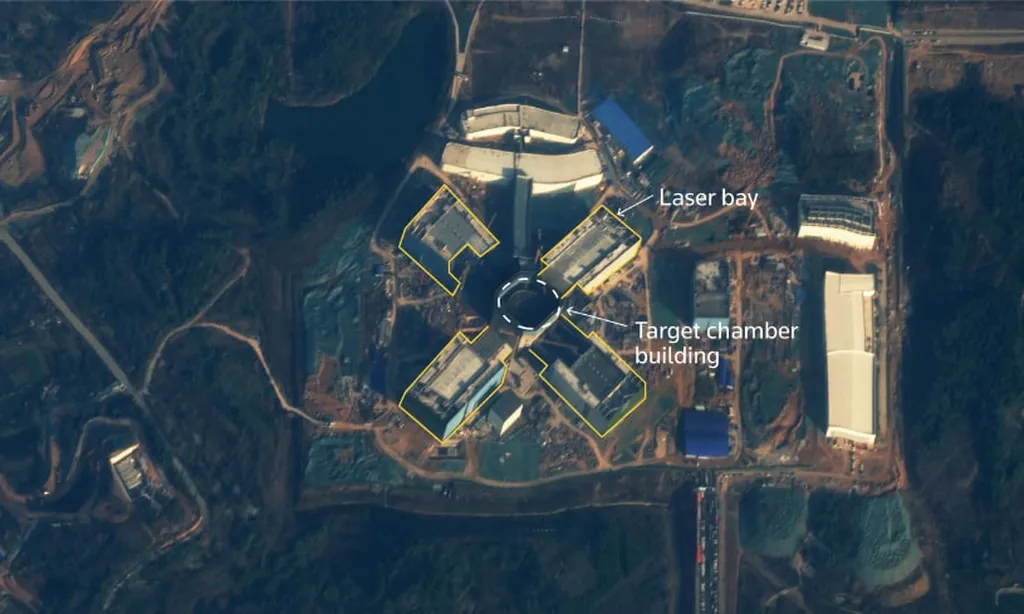In the relentless pursuit of clean, sustainable energy, scientists are delving deeper into the complexities of plasma physics to unlock the potential of nuclear fusion. Recent research published in the journal *Nuclear Fusion*, titled “Investigation of MHD events and associated toroidal rotation variation in an EAST long-pulse discharge,” sheds new light on the self-organizing regime in long-pulse discharges, a critical area of study for future fusion reactors. Led by R.J. Zhu of the University of Science and Technology of China and the Institute of Plasma Physics at the Chinese Academy of Sciences, this study offers insights that could significantly impact the energy sector.
The Experimental Advanced Superconducting Tokamak (EAST) in Hefei, China, has been a cornerstone in the quest for sustainable fusion energy. In this study, researchers observed multiple magnetohydrodynamic (MHD) instabilities and associated changes in core toroidal rotation during a long-pulse discharge. These observations are pivotal for understanding how plasma behaves under extended operational conditions, a key factor in making fusion energy commercially viable.
One of the most intriguing findings was the persistence of a m/n = 3/2 tearing mode (TM) for approximately 42 seconds before it was damped due to the evolution of the current profile. This mode’s interaction with the lower-hybrid wave (LHW) deposition, which is coupled with the current profile via the magnetic field, highlights the dynamic interplay between various plasma parameters. “The deposition of the LHW gradually changed the current profile with a stable heating power, which is crucial for maintaining stable plasma conditions over long durations,” explained R.J. Zhu.
The study also revealed the coexistence of a m/n = 1/1 long-lived mode (LLM) with the TM, which alternated with a m/n = 1/1 high frequency mode (HFM). The HFM appeared when the normalized electron temperature gradient (ETG) near the q = 1 surface exceeded approximately 8.5, and its frequency chirped as the electron temperature gradient varied. This intricate dance of modes provides valuable data for modeling and predicting plasma behavior in future fusion reactors.
A significant observation was the increase in core electron temperature and the acceleration of toroidal rotation in the counter-current direction following the disappearance of the TM. This phenomenon is attributed to the neoclassical toroidal viscosity (NTV) torque driven by these modes, which was modeled using the NTVTOK code. The results indicated that the TM drove a toroidal torque in the co-current direction, damping the intrinsic rotation. “Understanding these interactions is essential for optimizing plasma stability and performance in long-pulse discharges,” noted R.J. Zhu.
The implications of this research are far-reaching for the energy sector. By enhancing the understanding of the self-organizing regime in long-pulse discharges, scientists can develop more efficient and stable fusion reactors. This, in turn, could accelerate the commercialization of fusion energy, providing a clean and virtually limitless power source. As the world grapples with the challenges of climate change and energy security, advancements in fusion technology offer a beacon of hope.
The study, published in the esteemed journal *Nuclear Fusion*, underscores the importance of international collaboration and cutting-edge research in the field of plasma physics. With continued efforts, the dream of harnessing the power of the stars to meet our energy needs may soon become a reality. As R.J. Zhu aptly put it, “These results provide a prospective study on the physics under long-pulse conditions for future fusion reactors, bringing us one step closer to achieving sustainable fusion energy.”

